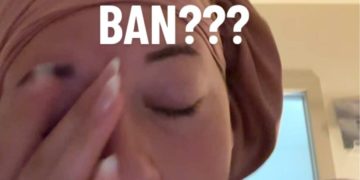There were jokes. There was despair. There were eulogies and fake funerals.
For about half a day in January, as a Supreme Court ruling banning TikTok took effect, some 170 million Americans were forced to grapple with the reality of a world without the app.
But then, after about 14 hours, it flickered back to life. Full pivots to Instagram Reels and YouTube were postponed, dubious alternatives like Red Note became fading memories. Things seemed back to normal. Sort of.
In the aftermath of the ban, Brielle Asero, a content creator in New York City, suspected that her algorithm had “reset.”
“It was like I had logged on to TikTok for the first time, and it was just showing random videos that like, were not curated to me at all,” she said.
Her algorithm eventually appeared to course-correct in the subsequent weeks, Ms. Asero, 22, added, but the change left her feeling uneasy.
Other users say they have felt similarly as the platform has been stuck in limbo for months, approaching an April 5 deadline to find a new American buyer or go dark in the United States once again. (Amazon has reportedly thrown its hat into the ring with an 11th-hour bid.)
In this uncertain interim period, some users say their For You Page curation — TikTok’s secret sauce is an algorithm that feeds content to users with almost clairvoyant accuracy — did not seem as well tailored as it did before the short-lived ban. Others voiced concerns that their content did not seem to be reaching as many viewers as it had before the January outage.
More broadly though, many articulated a newfound anxiety when using the platform, a lingering fear that TikTok could vanish again with the flip of a server switch, taking with it their carefully developed communities and even their livelihoods.
Put another way: The vibes are off.
TikTok did not immediately respond to a request for comment for this article, but in January it told Reuters that neither its policies nor its algorithms had changed during the outage.
“I hate to sound like I’m putting on a tinfoil hat, but I definitely think that there was something different with the app and my For You Page,” said Lauren Wootton, a 23-year-old bartender from Houston.
“I’m not a Trump supporter, but on my page I was getting so much pro-Trump content, and I thought that was really weird because usually your For You Page is built off what you like and what you subscribe to on the app,” she continued. “I’ve never liked any type of that kind of content, so I thought it was really odd.”
Though TikTok did not comment on political content on the platform after the January ban, an internal analysis within TikTok last year, as the 2024 presidential race was underway, found that pro-Trump content vastly outnumbered pro-Biden content on the platform.
Ms. Asero, who has over 690,000 followers on TikTok, said her videos did not appear to be reaching as many people these days.
“The second that we got back from the ban, I have noticed that my views have gone down so drastically,” she said. “With almost 700,000 followers, some of my videos won’t even get past like 4,000 views. That wasn’t an issue before the ban.”
The last few months on TikTok had been an “emotional roller coaster, she said. No matter what happens to the app this month, she would like the decision to be final.
Jeff Guenther, a therapist with a popular TikTok account, echoed Ms. Asero’s pleas for a final verdict, noting that the anticipation of another deadline had created a strange feeling on the platform. .
“It’s a weird, liminal space filled with ambiguity,” said Mr. Guenther, who lives in Portland, Ore. “We’re trying to carry on like normal, but it’s like you’re at the dinner table and Mom and Dad got into a fight, and now you’re just like trying to eat your dinner and be cool so that nothing weird happens again.”
Part of the seemingly depressed environment on the app may owe to people’s trepidation about putting out their best content on a platform that could soon disappear, despite assurances from President Trump.
Dori Boyd, a stay-at-home mother and parenting influencer with a modest following, said she had not felt motivated to continue trying to grow her presence on a platform that might not exist in a few days.
“Why am I pouring so much time and effort into something that’s just going to be taken away?” said Ms. Boyd, 29, who lives in West Point, N.Y.
“I don’t think we’re making our best content and I don’t think we’re like trying our best,” added Mr. Guenther, “possibly because you don’t really want to invest in something that might be gone very soon.”
Not everyone has been discouraged.
Ms. Wootton, the Texas bartender, said the looming ban had motivated her to focus on trying to build her audience as quickly as possible.
That way, she hopes, they’ll be able to find her on other social media platforms if TikTok goes away.
Madison Malone Kircher is a Times reporter covering internet culture. More about Madison Malone Kircher
The post After Briefly Disappearing, TikTok Went Back to Normal. Or Did It? appeared first on New York Times.



















